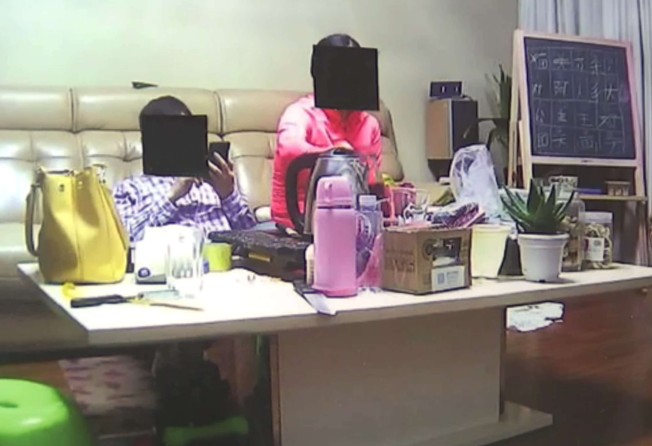Prying webcams used by artist to capture unsuspecting Hongkongers in controversial UK exhibition
Privacy experts have criticised a London artist for unfairly accessing peoples’ personal data after home devices were used without consent to collect images from inside homes

A controversial London art exhibition featuring images captured by unsecured webcams has raised alarm bells among Hong Kong privacy advocates.
Images from a London exhibition titled Backdoored.io and provided to the Post by Channel 4 News in Great Britain captured homes and businesses located in Hong Kong.
The exhibition features images found by bots, which scanned unsecured webcams around the world, gathered shots of unsuspecting users and placed them onto search engines. The exhibition also includes images from Russia and the US.
The exhibition includes images of a family having dinner in their living room, children sleeping and a woman sitting on a sofa – all completely oblivious to the fact that they are being spied upon.
The term “backdoor” is based on hacker lingo, meaning a feature or defect within computer hardware or software that allows unauthorised access to data.
“I want to demonstrate how fragile our privacy is in this bold new age of ubiquitous connectivity,” artist Nye Thompson wrote on her website.
However, privacy advocates have criticised the exhibition for its unauthorised use of personal data and images that clearly show the person’s face.
“It may be difficult to argue that those images, which may constitute personal data of an individual, were collected in a fair manner,” said Craig Choy, barrister and expert in privacy law for the Progressive Lawyers’ Group.
“Remember that Google once collected public street images and those images exposed [the] faces of people and their private lives. Even [though] images may be collected from the public or public domain on the internet, it does not mean that those images can be used without invading the privacy of someone.”
In an interview with Channel 4, Privacy Commissioner for Personal Data Stephen Wong Kai-yi, called for the Hong Kong images to be pulled from the exhibition.
“Given the concerns about the personal data of citizens or residents of Hong Kong, we as regulators would like to see that these images are removed from the gallery. And also if there is any commercial interest involved, we would like to see that the persons involved will stop selling these images to obtain gains without the consent of the people concerned.
“I would also like to see the artist delete or destroy all the images with identifiable persons that are kept or stored by the artist, and also those people who work with her.”
A spokeswoman for the privacy commissioner said legal avenues to have the images removed were being considered.
I cannot help but ask where the artistic input of the artist is in these images
“[The commissioner] may consider referring appropriate cases to overseas data protection authorities for follow-up actions pursuant to international cooperation arrangements.”
Representatives for Thompson did not respond to the Post’s inquires.
A spokesperson for London Metropolitan University - who has provided the space for the exhibition - backed the artist and said the exhibition complied with relevant British privacy laws.
The university said it “supported artistic freedom of expression, and any work by our alumni which helps to draw public attention to contemporary issues of privacy”.
Choy however, was not convinced that the exhibition should have receive an artistic exemption under the UK’s laws.
“On whether this exhibition should be exempted as an ‘art’ under the Data Protection Act of UK, I cannot help but ask where the artistic input of the artist is in these images.”
In a reply to Channel 4, the British Information Commissioner’s Office said it was aware of the exhibition and was making enquires.
With the geolocation of the various images all pointing to the single location, Wing Lee Street in Sheung Wan, the accuracy of the coordinates remains in doubt.